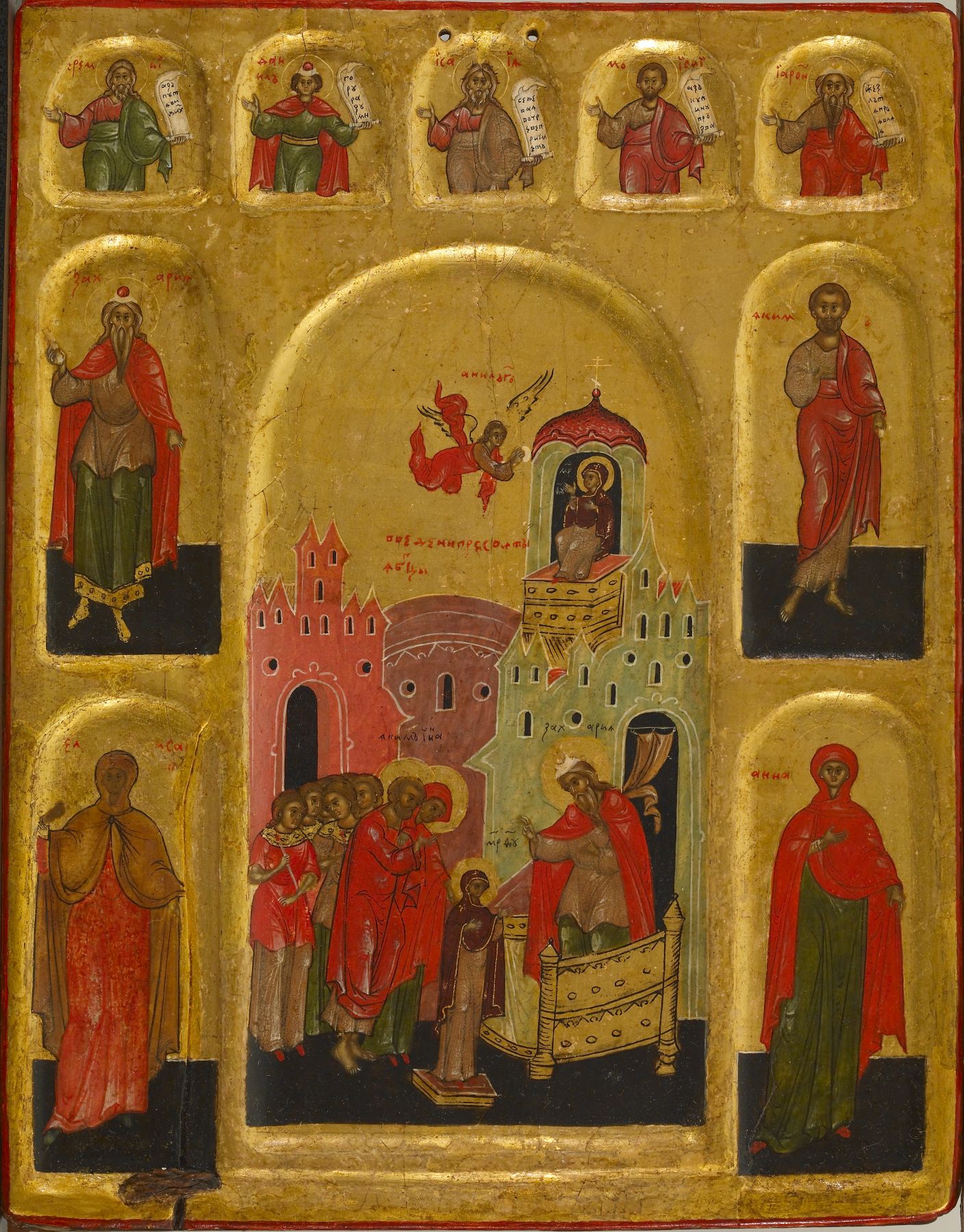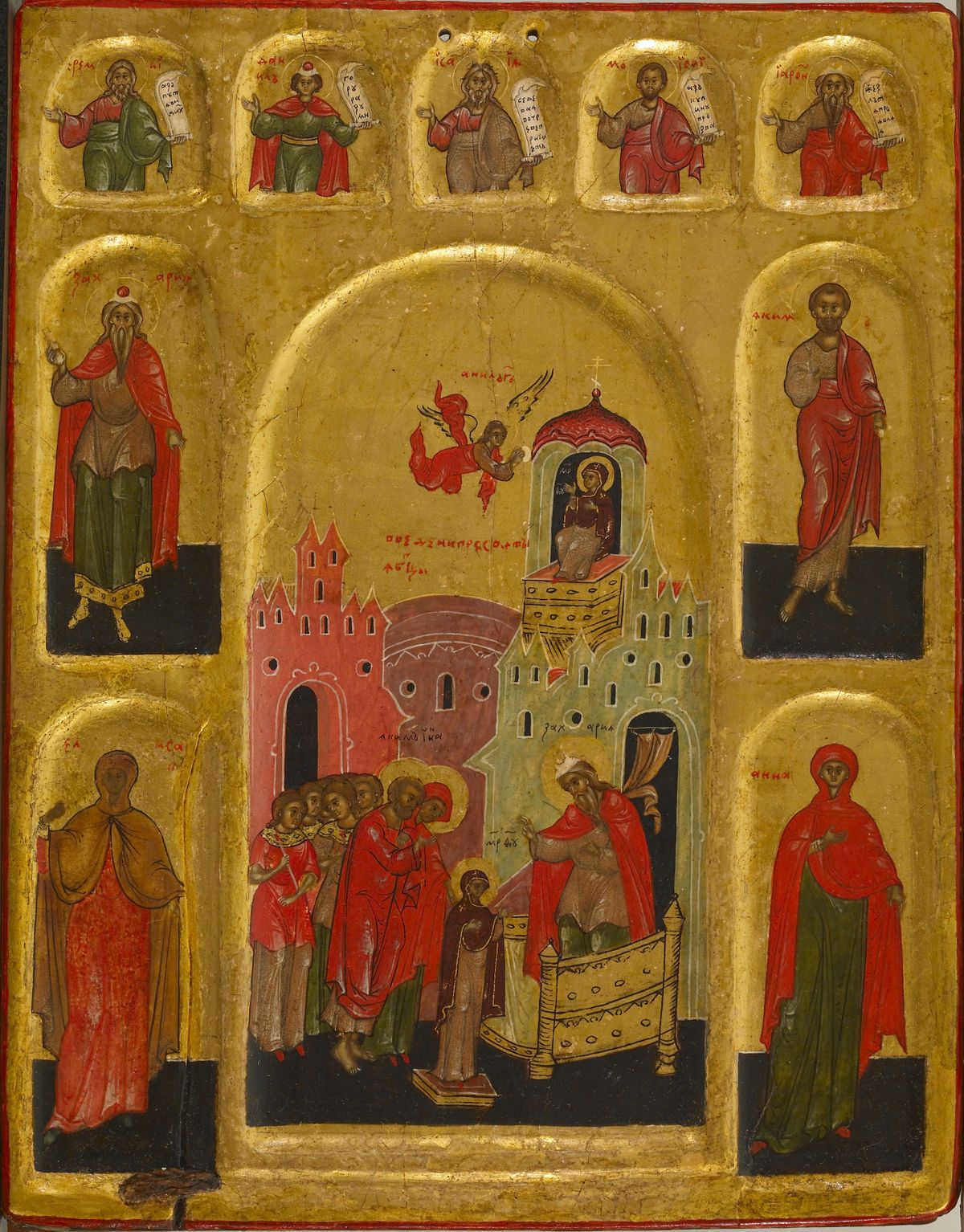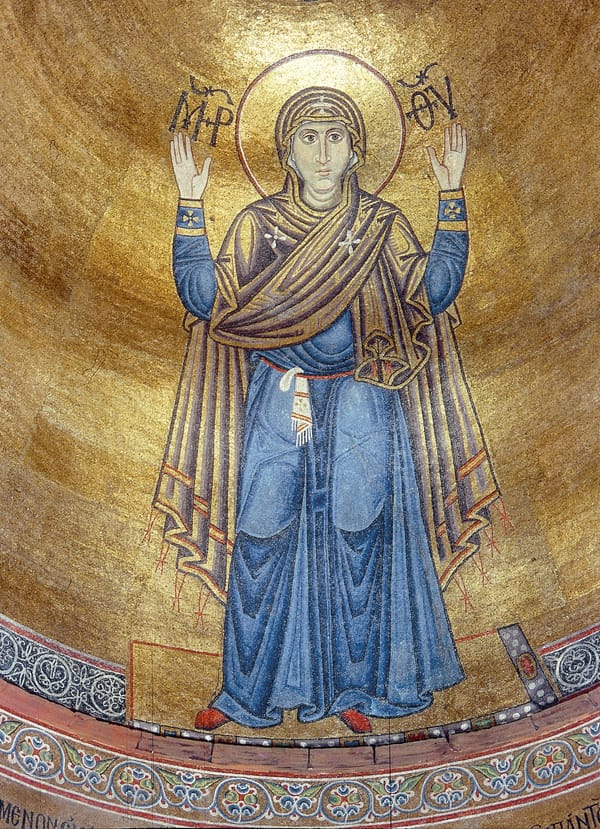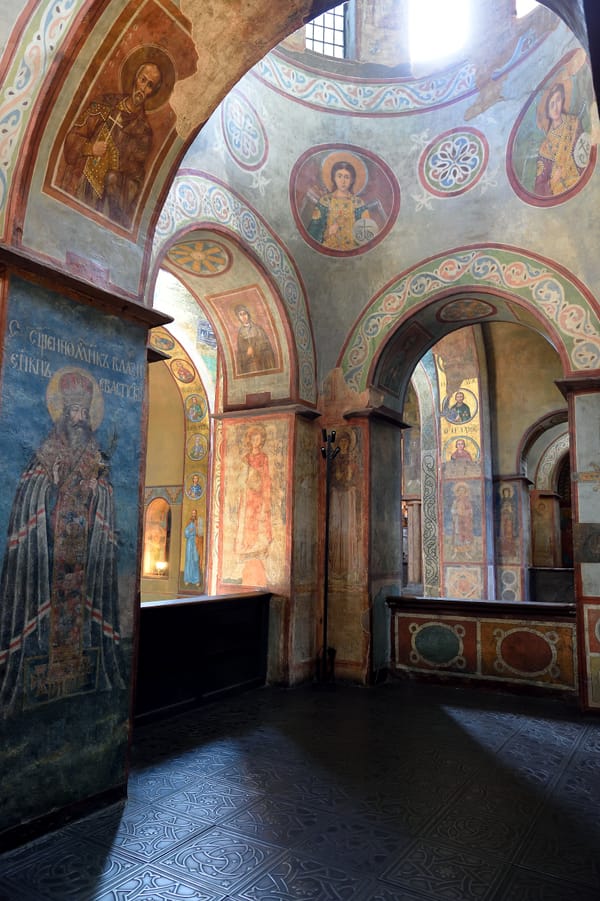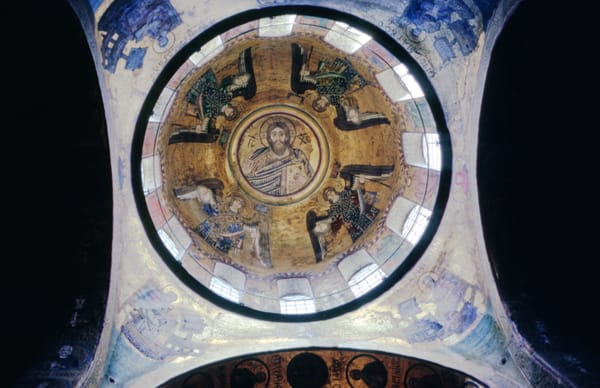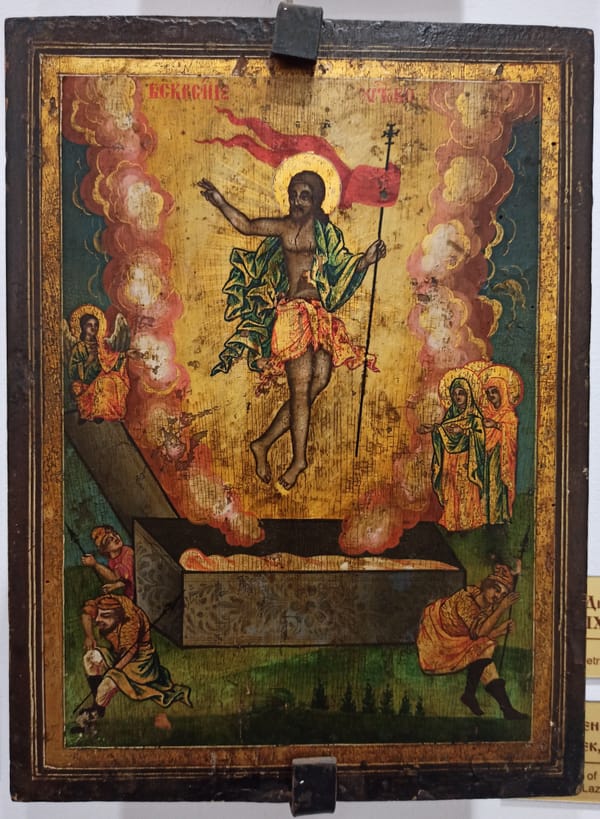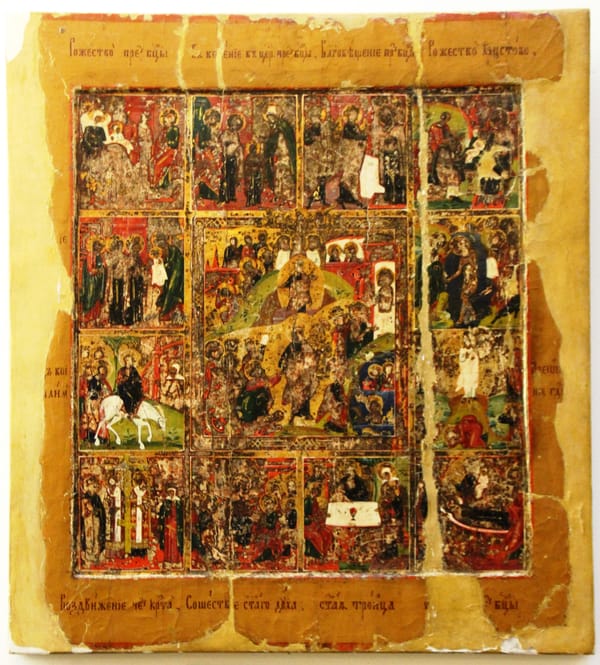Details:
This rare double-sided icon was most likely commissioned by Tsar Boris Godunov (r. 1598-1605) as a gift for a church in Jerusalem, where it was kept until the mid-20th century. It would have been displayed for veneration on the feast days of the Virgin's Presentation in the Temple (November 21) and of the Prophet Moses (September 4). One side of the panel shows the Presentation (Protoevangelium of James 7:2-8:1) between images of the Virgin's parents Joachim and Anna (right), and John the Baptist's parents Zechariah and Elisabeth (left). Five Old Testament figures in the upper border, Jeremiah, Daniel, Isaiah, Moses, and Aaron, hold scrolls with prophecies referring to the Virgin.
The four corner scenes on the other side illustrate the prophetic visions of Moses (Ex 3:2), Isaiah (Is 11:10), Ezekiel (Ez 44:2), and Jacob (Genesis 28:12). In the center is the Virgin of the Burning Bush, a complex composition inspired by the Old Testament story in which God revealed himself to Moses through a bush that burned without being consumed by the fire (Exodus 3:2). The small female heads on the Virgin's shroud represent the celestial bodies, while the larger, crowned bust upon her chest depicts the Sun as a symbol of Christ (Malachi 4:2). Mary is surrounded by four creatures that stand for the four evangelists and by eight angels each of whom, as the accompanying inscriptions explain, holds sway over certain natural elements and simultaneously represents a certain aspect of the Spirit of the Lord (Isaiah 11:2-3).
Our small panel is one of the earliest known examples of an uniquely Russian image of the Mother of God. The first ever icon of the Virgin of the Burning Bush was probably painted shortly after 1547 for one of the renovated churches in the Moscow Kremlin; it no longer survives.
